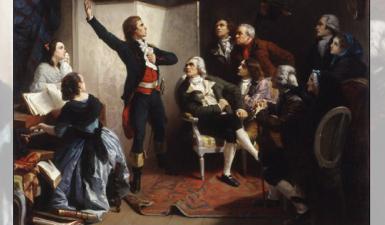La Marseillaise, past and present
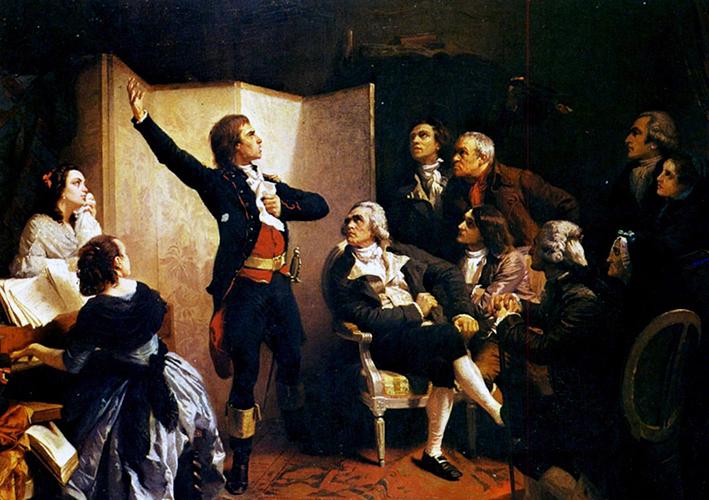
Contents
14 juillet : prise de la Bastille.
26 août : déclaration des droits de l'Homme et du Citoyen.
14 juillet : fête de la Fédération.
20 avril : déclaration de guerre de la France à l'Autriche.
25 avril : composition à Strasbourg par Rouget de Lisle du Chant de guerre pour l'armée du Rhin.
11 juillet : "La patrie en danger", les armées autrichiennes et prussiennes aux frontières de la France.
23 juillet : adoption par les volontaires marseillais se rendant aux frontières du Chant de guerre de l'armée du Rhin, baptisé à cette occasion Chant des Marseillois par les Parisiens.
10 août : prise du palais des Tuileries et chute de la monarchie au chant de La Marseillaise.
20 septembre : victoire de Valmy.
21 septembre : abolition de la royauté, proclamation de la République.
30 septembre : création à l'Opéra de Paris de L'Offrande à la liberté de François-Joseph Gossec, première harmonisation pour orchestre de La Marseillaise.
Emprisonnement de Rouget de Lisle, opposé à la destitution du roi, jusqu'en juillet 1794.
14 juillet : composition par Étienne Nicolas Méhul et Marie-Joseph Chénier du Chant du départ.
14 juillet : adoption de La Marseillaise comme "chant national" par la Convention thermidorienne.
14 juillet : La Marseillaise remplacée par le Chant du départ.
Orchestration avec ch?urs de La Marseillaise par Hector Berlioz.
Septembre-décembre : La liberté guidant le peuple, huile sur toile, Eugène Delacroix.
26 juin : décès de Rouget de Lisle à Choisy-le-Roi.
29 juillet : inauguration de l'Arc de triomphe et du haut-relief Le départ des Volontaires de 1792, dit La Marseillaise réalisé par François Rude.
15 juin : Rouget de Lisle chantant la Marseillaise pour la première fois en 1792, huile sur toile, Isidore Pils, présenté au Salon de l'Académie des Beaux-Arts.
Reprise de La Marseillaise comme hymne national.
6 juillet : la fête nationale française fixée au 14 juillet.
14 juillet : première fête nationale, avec remise des drapeaux, défilés, salves d?artillerie et bals populaires.
20 mai : adoption de la version officielle pour orchestre de La Marseillaise.
25 février : l?apprentissage de La Marseillaise dans les écoles françaises rendu obligatoire par le ministre de l?Instruction publique.
14 juillet : transfert des cendres de Rouget de Lisle sous le Dôme des Invalides à Paris.
Février-novembre : La Marseillaise adoptée comme hymne national par le gouvernement provisoire de la Russie.
9 février : sortie du film La Marseillaise de Jean Renoir.
14 juillet : officialisation de la version de La Marseillaise de Pierre Dupont.
27 octobre : La Marseillaise explicitement mentionnée comme hymne national dans l?article 2 de la Constitution.
4 octobre : confirmation de La Marseillaise comme hymne national dans l?article 2 de la nouvelle Constitution.
13 mars : La Marseillaise protégée du délit d'outrage par la loi.
23 avril : loi rendant obligatoire l'apprentissage de La Marseillaise dans les écoles.
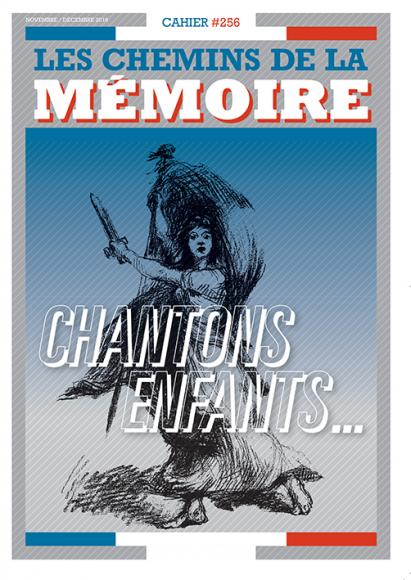
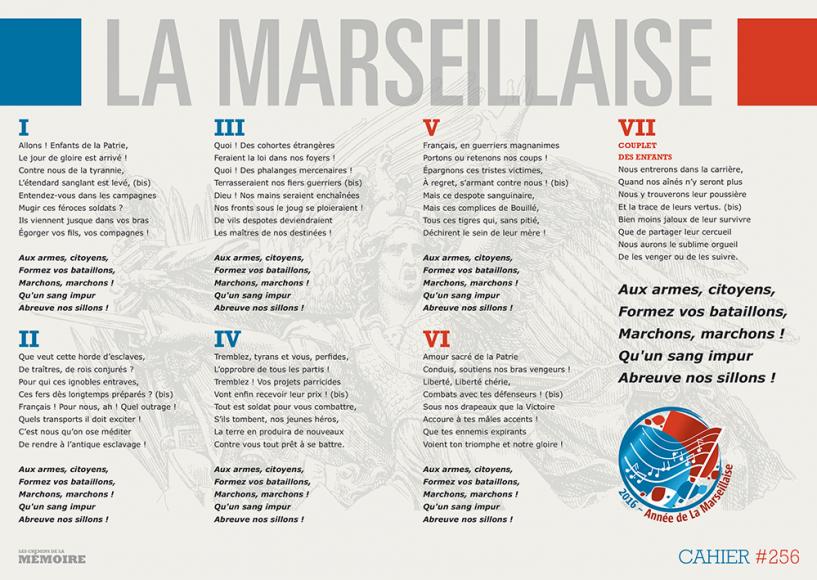
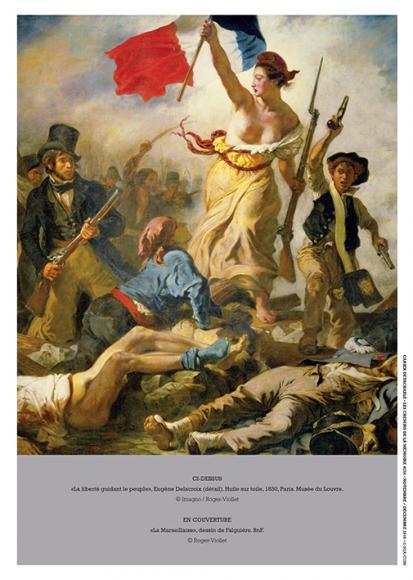
Summary
DATE : 25 April 1792
PLACE : Strasbourg
OUTCOME : Composition of La Marseillaise
COMPOSER : Rouget de Lisle
Inherited from the French Revolution, La Marseillaise has been a part of French history for more than two centuries, both in times of hope and jubilation, and at its most tragic times of hardship and upheaval. A symbol of unity, it became the rallying cry of the champions of freedom, in France and around the world.
Composed on the night of 25 to 26 April 1792, with the title Chant de guerre pour l'armée du Rhin (Battle song for the Army of the Rhine), La Marseillaise was sung for the first time by its composer, Joseph Rouget de Lisle, an officer in the engineers popular among his fellows for his guitar playing and singing. Versions differ as to the circumstances of that first rendition: whether it took place that same evening at a dinner at the home of Dietrich, mayor of Strasbourg, the next morning after a night's composition, or at an officers' dinner. History has preserved the account immortalised by Lamartine in his Histoire des Girondins and Isidore Pils's painting, made in 1849, amid the euphoria of the proclamation of the Second Republic. The first edition of the score was printed without the composer's name, in Strasbourg, by Dannbach. It was dedicated to Marshal Luckner, making it possible to date it no later than May 1792, when Luckner was appointed commander of the Army of the North, before dying on the scaffold in January 1794. Dietrich would meet the same fate, being guillotined in 1793. Opposed like the others to the deposition of the king, Rouget would escape the death sentence, although he would be imprisoned from August 1793 to July 1794.
To begin with, the song was circulated around France by clubs and newspapers. It was introduced in Montpellier by future general François Mireur. It was then adopted by the battalion of Marseille volunteers, called upon by the Theodorian Convention to participate in the overthrow of the constitutional monarchy, on 10 August 1792, which saw the Revolution descend into terror. The song then became a rip-roaring success. The circumstances of its arrival in Paris and its adoption by the inhabitants of the capital caused it to be named La Marseillaise.
Gossec ironed out a few weaknesses in Rouget's score and wrote its first arrangement for orchestra, with the title L'Offrande à la Liberté (The Offering to Liberty). That version opened all concerts and performances. Chosen by the Thermidorian Convention as the official anthem in 1793, it was declared the “national song” by the Convention on 14 July 1795 (26 Messidor Year III, in the Republican Calendar). La Marseillaise quickly became known throughout Europe. It was translated into English and German as early as 1792, reached Sweden by 1793, and was introduced to the United States in 1795.
Associated with the excesses of the Revolution, La Marseillaise was banned under the Empire in favour of Chant du départ and Veillons au salut de l'Empire. It reappeared during the Hundred Days, but was banned once again under the Restoration. It was sung during the July Revolution, in 1830, and Berlioz made a masterful arrangement of it for orchestra and choir, which he dedicated to Rouget de Lisle. Even so, La Marseillaise did not regain its national anthem status either under the Second Republic or the Second Empire. Its resurgence during the popular risings that brought down the regimes of the 19th century confirms how deeply embedded it was in the French psyche, from years of performance combined with the thrilling memory of the Revolution. La Marseillaise remained a subversive song, restricted to the poor neighbourhoods of big cities.
A CONTESTED PATERNITY
Bonaparte commissioned Rouget de Lisle to write a new anthem, but his Chant des combats, performed at the Opéra Comique on 3 January 1800, was a flop, as was Vive le roi, composed for the return of the Bourbons in 1815. With only a single masterpiece to his name, Rouget de Lisle's authorship of the melody of La Marseillaise was contested, especially since the first editions did not bear his name. Some saw in it the work of Pleyel, Holtzmann, or even Mozart. In 1863, the musicologist Fétis was summoned to court for having attributed the composition to Navoigille, but he withdrew. In 1886, French historian Arthur Loth found the theme of the piece in Les Stances de la calomnie, taken from the oratorio Esther, a score predating the Revolution, written by Jean-Baptiste-Lucien Grisons, choirmaster at the chapel of Saint-Omer from 1775 to 1787. The case caused a furore, and led Constant Pierre to publish his research on the musical repertoire of the Revolution, and Julien Tiersot his history of the anthem, both of which defended Rouget. More recently, a score by virtuoso Italian violinist
Giovanni Battista Viotti, Tema e variazioni in Do maggiore, thought to date from 1781, has been found to contain the theme of La Marseillaise. There was no such thing as copyright at that time, and borrowings were frequent, so the debate is far from over.
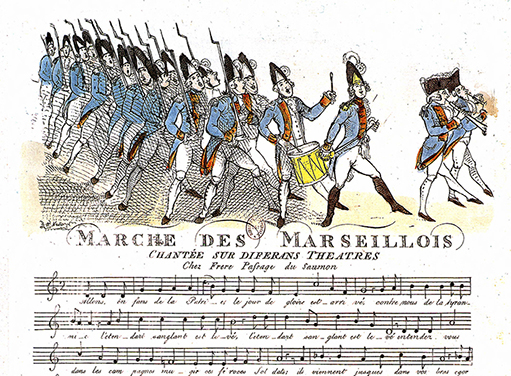
First score of La Marseillaise by Claude Joseph Rouget de Lisle, 1792. BnF
© Roger-Viollet
AN ANTHEM SEEN AS SUBVERSIVE
The Second Empire was keen to forget La Marseillaise, and permission to perform it on stage was systematically denied, except at the declaration of war in July 1870. This song of insurrection was resumed under the Commune. It was sung on 8 September 1877, at the funeral of Adolphe Thiers. The same year, following a performance of the song at a theatre in Nantes, republican deputies tried to have it reinstated as the national anthem. On 30 June 1878, the musical director of the Republican Guard, Adolphe Sellenick, was reprimanded by the commander of the Guard. This unprecedented treatment of the musical director of the army's - and the regime's - most prestigious orchestra was intended by war minister General Borel to be exemplary. The grounds he gave for banning the song drew on the argument invoked since the Restoration: “Quite apart from any political significance one might wish to ascribe to it, which it is important to avoid in all matters affecting the army, La Marseillaise was written for wartime and is therefore not appropriate to the army today, since we are, and wish to remain, at peace with the entire world.” This case occurred towards the end of the crisis of 16 May 1877, which toppled the regime, with institutions awaiting the restoration of the monarchy being replaced by a radical republic that would make repeated symbolic gestures asserting its revolutionary past. Almost certainly in concert with the Parisian authorities, who were inaugurating a monument to the Republic, Sellenick's performance heralded a return to favour for the revolutionary song. The affair did not affect his career, for he went on to be made a Knight of the Legion of Honour, and the Minister for War commissioned a military march from him for the Bastille Day celebrations of 14 July 1880. He also remained in his post until the age limit, in 1884.
A NATIONAL ANTHEM IS ADOPTED
On 14 February 1879, a bill was presented by Gambetta, then withdrawn. Six days later, at the proposal of General Gresley, Minister for War, Parliament declared La Marseillaise the official national anthem by confirming the decree of 14 July 1795 (26 Messidor Year III, in the Republican Calendar). A letter from the war minister of 24 February 1879 states that “the anthem entitled Hymne des Marseillais shall be performed in all circumstances where military bands are called upon to play an official tune”. The letter would have one believe that the piece had never ceased to be the official anthem, as if the other regimes had been nothing but historical parentheses: “A decree-law dated 26 Messidor Year III (14 July 1795), published in the Bulletin of Laws and which has never been revoked, provides that the piece of music entitled Hymne des Marseillais shall be performed by military bands.” 1879 was too soon, for the republicans had yet to decide upon a date for France's national day. The first Fête Nationale, or Bastille Day, was therefore on 14 July 1880, with the handing over of military flags at Longchamp racecourse, parades, gun salutes and public dances. Since that date, La Marseillaise has been performed at all official ceremonies.
AN OFFICIAL SCORE
When an official anthem is adopted, there needs to be a reference score, to avoid differences of execution when more than one band perform together. In 1845, the adoption of the instruments of Adolphe Sax had resolved the issue of instrumentation and organisation. All that remained was to agree on the score. Gossec's arrangement was not suitable and that of Berlioz was really intended to accompany a choir, not to be played by itself. In 1886, General Boulanger, then Minister for War, launched a competition among musical directors and formed a jury of the leading musicians of the time. The official version for orchestra was adopted on 20 May 1887. A new score was adopted in 1912 to be performed with choirs. It was adapted by Pierre Dupont, whose version became the official one in 1938, and remains so to this day, the only exception being the presidency of Giscard d'Estaing, who asked for it to be played more slowly.
NATIONAL ANTHEMS ACROSS EUROPE
From 1792 onwards, the revolutionary ideas disseminated by the French armies had unsettled the peoples of Europe. Between 1809 and 1813, students and soldiers of the German Freikorps turned to the writings of their poets (Arndt, Weber, Uhland, etc.). Schiller's Ode an die Freude (Ode to Joy) was set to music by Beethoven. This musical theme, the last movement of Beethoven's Ninth Symphony, would become the European anthem in 1986. In Poland, Sienkiewicz and Kurpinsky wrote La Varsovienne (The Song of Warsaw) in 1831. In Belgium, the revolt of 1830 which led to independence was triggered at the opera by the words of Auber's La Muette de Portici. In Italy, it was Verdi, whose very name symbolised unity: in the mouths of the partisans of unification, “Viva VERDI” meant Viva Vittorio Emanuele Re d'Italia (Long live Victor Emmanuel, King of Italy). Written in 1840 and set to music in 1854, Die Wacht am Rhein (The Watch on the Rhine), served as the official national anthem of the German people during the Franco-Prussian War. The question of nationhood also inspired the poet August Heinrich Hoffmann von Fallersleben. In 1841, he wrote Das Lied der Deutschen or Deutschlandlied, which he set to music by Haydn, the third couplet of which is the present-day German national anthem. The model came from the British, who were the first to compose patriotic anthems. As early as the mid-18th century, they adopted Rule Britannia (1740), God Save the King (1745; the melody is borrowed from a composition by Lully, which is still contested by the British) and Heart of Oak (1759), the anthem of the Royal Navy.
A DIALOGUE BETWEEN PEOPLES
Besides expressing collective identity through singing, national anthems are also a means of addressing other nations. In this sense, they established a kind of dialogue between peoples, a concert of nations. Music and song act on the long-term memories of people. Songs we learn as children, or hear as teenagers, are remembered for the rest of our lives. Thus, they leave indelible marks on successive generations. These pieces of music permeate the collective memory, influencing its evolution, which is necessarily slow in this context. Europe sang in one voice up until Luther. Not popular songs, but the sacred repertoire. Without necessarily speaking Latin, the people sang it and understood what it meant. By making German a liturgical language, Luther broke the unity of Latin. National anthems can therefore be interpreted as an attempt to establish a dialogue between peoples, between nations, for want of refinding that lost unity. In the days when recording and modern broadcasting techniques like radio, film and television were as yet unknown, song was a essential medium.
A COLLECTIVE BOND IN CONSTANT DEBATE
A national anthem is viewed in the country that has adopted it as a tool of cohesion, of collective identity. Beyond its words, melody and history, the composition takes on its own significance, enabling all to recognise themselves in it. When a song is raised to the status of national anthem, any subversive significance is toned down. La Marseillaise had been used since the French Revolution as a political song, but now workers preferred L'Internationale, for which the music was composed in 1888. This change was also seen overseas. From February to November 1917, La Marseillaise served as the official anthem for Russia's provisional government, until the Bolsheviks replaced it with the Internationale. In France, Jean Renoir's 1938 film La Marseillaise contributed to reconciling the song with the popular masses, even though questions continued to be raised about its institutionalisation. Today, only the first and sixth couplet and the chorus by Rouget de Lisle are sung, together with the seventh couplet (known as the “children's couplet”), which is ascribed to Abbé Pessonneaux. The other verses are almost never performed.
Questions, criticisms and challenges, however legitimate they might sometimes be, also call into question the validity of its role and therefore of the collective bonds uniting the individual members of a nation. Despite its complex history, for more than two centuries La Marseillaise has moved to the rhythm of the history of France. While it may not be above controversy, and may at times have been snubbed, the anthem continues to be viewed as a symbol of union and remains irrevocably associated with the Republic. It rings out at all its celebrations: commemorations, official ceremonies, memorial celebrations and international sporting events. La Marseillaise has been protected against the offence of desecration since 2003, and has been required to be taught in schools since 2005.
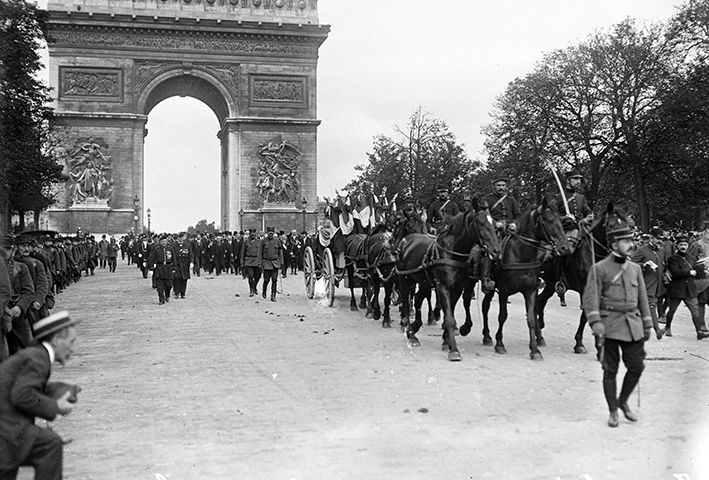
Transfer of Rouget de Lisle’s ashes to Les Invalides: the procession, Avenue des Champs-Élysées, Paris, 14 July 1915.
© Wackernie / Excelsior - L'Équipe / Roger-Viollet
WITH THE FRENCH IN THEIR HARDSHIPS
The institutionalisation of the anthem has involved its being taught to the younger generations. In 1911, in the face of increasing tensions across Europe, French education minister Maurice-Louis Faure made it compulsory for La Marseillaise to be taught in schools.
With the outbreak of the First World War, it became the song of the “sacred union”, the pledge of political unity on the home front as the last bastion against German aggression. It was sung and played both at the front and in the civilian zone, on café terraces and at the theatre as well as at official ceremonies. A symbol of this fervour, on 14 July 1915 the ashes of Rouget de Lisle were exhumed from the cemetery of Choisy-le-Roi and interred under the Dôme des Invalides, in Paris, following a formal ceremony.
La Marseillaise remained the national anthem under the Vichy government, and was not really challenged by Maréchal nous voilà, which never became an official anthem. It was sung by French soldiers in England, by prisoners in the Stalags and by members of the Resistance movement. The constitution of 1946, then that of 1958, both make express reference to La Marseillaise as the national anthem. In 1962, it was sung both by the partisans of French Algeria and the supporters of General de Gaulle, who would break into it in his speeches before those present were able join in. On 30 May 1968, it was sung by supporters of de Gaulle on the Champs-Élysees.
Some renditions of La Marseillaise have been highly acclaimed, such as those by Jessye Norman in the Place de la Concorde at the bicentenary of the Revolution, on 14 July 1989, and Mireille Mathieu; others, like Serge Gainsbourg's 1979 reggae version, have gone down less well, and its use at football matches is often controversial. More recently, at the National Assembly's tribute to the victims of the terrorist attacks of 7 January 2015, deputies sang it in unison to symbolise national unity in the face of the terrorist threat. This symbolic act was repeated when Parliament met at Versailles following the terrorist attacks of 13 November 2015.
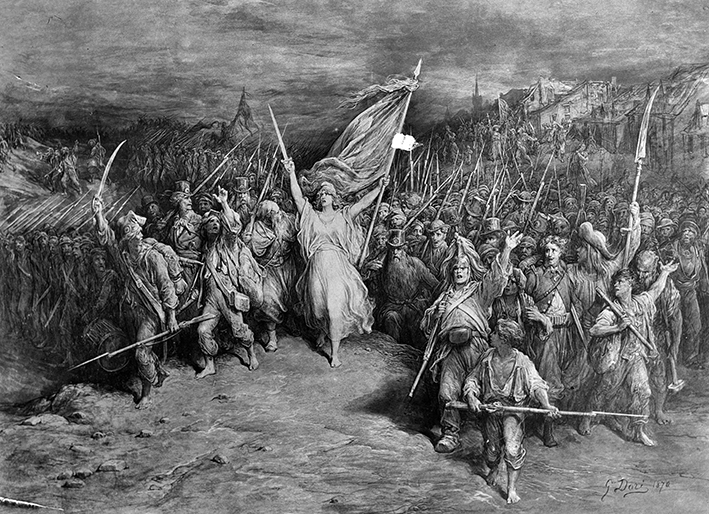
Gustave Doré (1832-1883), La Marseillaise, allegorical engraving, 1870. BnF
© Albert Harlingue / Roger-Viollet
A SANCTIICATION OF THE COLLECTIVE BOND
An expression of the bonds uniting a people, national anthems have a sacred dimension too. Performers and listeners are expected to adopt a respectful posture, which means standing with the head uncovered. It is not the song itself which is sacred, so much as what it represents to society. La Marseillaise has been on official record since the early days of the Revolution, when it replaced the traditional Te Deum: “Upon receipt of the news, the Convention decreed the celebration of a civic festival, at which, on war minister Servan's proposal, it was decided that, instead of the Te Deum, the Hymne des Marseillais would be sung. This session of the National Assembly at which Rouget de Lisle's composition was acknowledged by name (28 September 1792) was the first at which mention was made of the future national anthem, and the performance which followed was the first official rendition of it.”
In the Roman liturgy, the Te Deum is sung at formal thanksgiving services (victories, national days, royal births, disease remission, the benediction, processions, etc.) and in all circumstances where thanks are offered to God. By replacing this hymn with La Marseillaise to celebrate a victory, its sacred function is transferred. It is no longer God who is celebrated by the people; instead, the people celebrate their own victory, as masters of their own destiny.
Author
Thierry Bouzard, music historian
Articles of the review
-
The event

“La Marseillaise: a song of war, a song of freedom”
The anniversary year of La Marseillaise is brought to a close on 2 December 2016 with a conference at the Ministry of Defence. This scientific event, bringing together researchers from France and overseas, is an opportunity to look, from a historical as well as a musicological perspective, at the Fr...Read more -
The figure
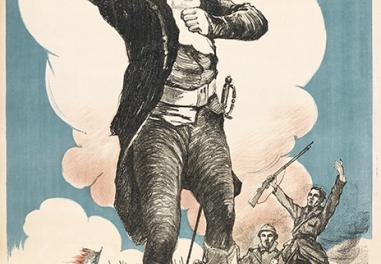
Rouget de Lisle and La Marseillaise
Designed and produced by the Musée de l'Armée as part of “2016, the year of La Marseillaise”, this documentary exhibition, shown in the main courtyard of the Hôtel des Invalides until October, has since become a touring exhibition, also accessible via the museum's website....Read more -
The interview

Aurore Tillac
The official choir of the French Republic, the choir of the Republican Guard is formed of 45 French singers, recruited from among the elite of the discipline. Director of the choir since 2007, Aurore Tillac talks of the special place of La Marseillaise in the official repertoire....Read more



